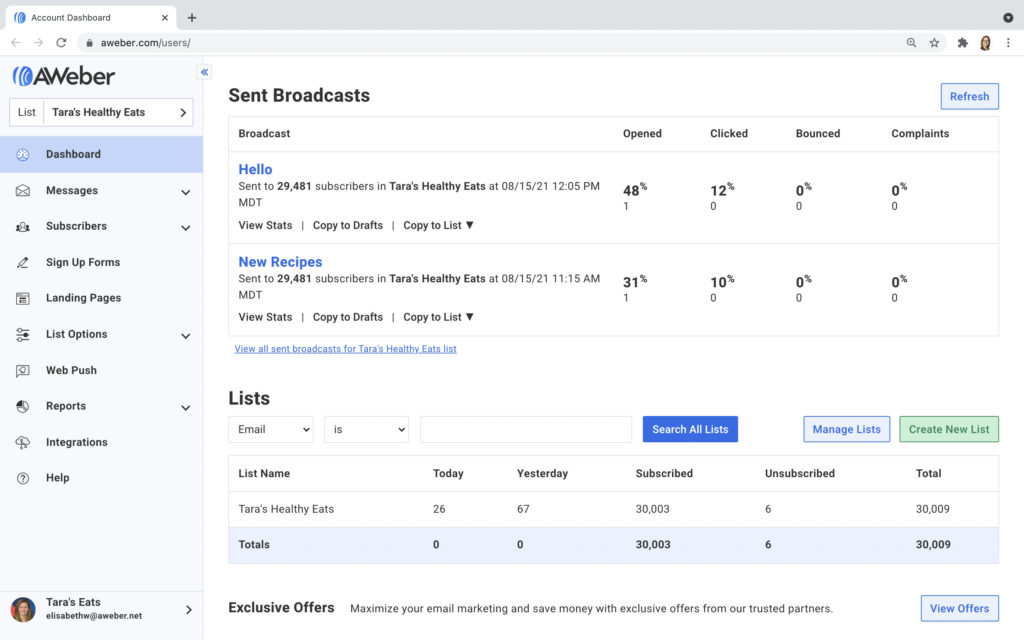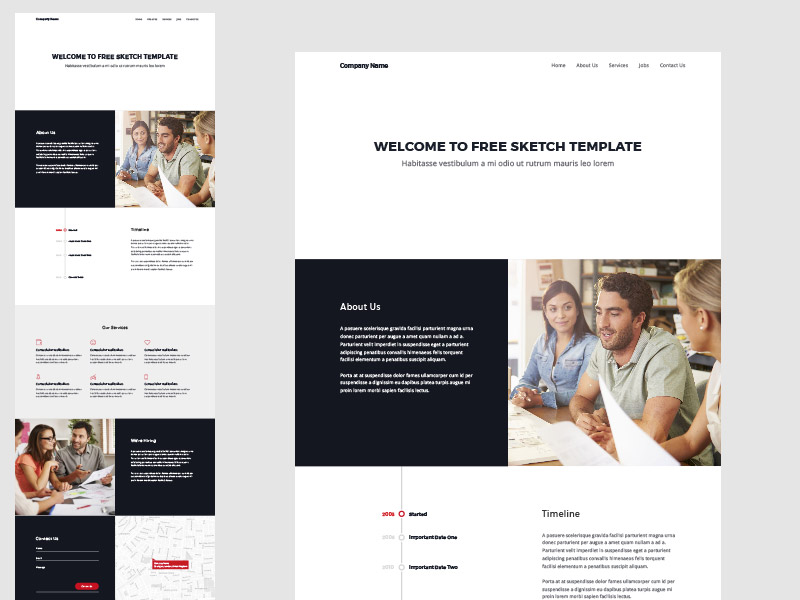blog as .com or other tld which are good
In the vast realm of the internet, choosing the right domain extension for your blog is akin to selecting the perfect address for your digital home. The debate often centers around the classic .com and the myriad of other top-level domains (TLDs) available. As you embark on your blogging journey, understanding the nuances of these choices is crucial. Let’s explore the considerations that can guide your decision and ensure your blog’s success in the digital landscape to find out which are good blog com or other tld.
People normally says it is better to have a .com domain when starting a blog. If you look at the most popular and successful blogs out there, you will see that almost all of them have a .com ending. And it’s not just for blogs! Look at the websites of most businesses, and you will see they are .com too.
One commonly-held belief about .com domains that is actually untrue is that having a .com domain helps with SEO (search engine optimization.) This is a myth. Having a .com ending will not help your website rank higher in the search engine results. Although you will typically see .com websites ranking higher in the results, this is just because it’s the most common TLD ending. So while having a .com domain name does not give you any SEO benefits, it does give you all of the other benefits that I mentioned below.
The Classic .com: Time-Tested and Widely Trusted
Benefit: Global Recognition and Credibility
The .com TLD is the undisputed heavyweight champion of domain extensions. It enjoys universal recognition and trust among internet users. When visitors see a .com domain, it often instills a sense of reliability and professionalism. This familiarity makes it an excellent choice for blogs aiming for a global audience.
Beyond .com: Exploring Alternative TLDs
Benefit: Specialized Branding and Niche Appeal
While .com holds a dominant position, alternative TLDs provide an opportunity for creative and niche branding. TLDs like .blog, .tech, or .travel can immediately convey the theme or focus of your blog. For instance, a photography blog might opt for a .photo or .gallery extension, adding an extra layer of relevance to the domain.
Local Appeal: Country Code TLDs (ccTLDs)
Benefit: Geo-Targeted Relevance
For blogs with a specific regional or country-focused audience, using a country code TLD (e.g., .uk, .ca, .au) can enhance local relevance. This choice signals to users that the content is tailored to their geographical area, potentially boosting trust and engagement within that specific audience.
SEO Considerations: Impact on Search Rankings
Benefit: Neutral SEO Impact, Quality Content Prevails
In terms of SEO, Google has stated that they treat all TLDs equally. The domain extension itself is not a direct ranking factor. However, it’s essential to consider user perception and trust. Visitors may be more inclined to click on a .com domain, which indirectly influences click-through rates and user engagement – factors that do impact SEO.
Domain Availability: Finding the Perfect Fit
Benefit: Creative Branding Opportunities
Securing a memorable and relevant .com domain can be challenging due to its popularity. Exploring alternative TLDs may offer more flexibility in finding a domain that aligns seamlessly with your blog’s theme or niche. This can lead to a more memorable and brand-aligned web address.
Domain Length: Striking a Balance
Benefit: Memorability and User-Friendliness
Consider the length of your domain. While shorter domains are often easier to remember, some TLDs may allow you to create a concise and meaningful web address even if the chosen words are longer. Striking a balance between brevity and descriptiveness is key for a user-friendly and memorable domain.
Brand Consistency: Aligning with Your Identity
Benefit: Coherent Brand Messaging
Consistency is crucial in branding. Your domain should align seamlessly with your brand identity across all online platforms. Whether you choose a .com or an alternative TLD, maintaining brand consistency fosters trust and recognition among your audience.
Future Considerations: Scalability and Expansion
Benefit: Flexibility for Future Growth
Anticipate the future evolution of your blog. If there’s potential for diversification or expansion into different content categories, choosing a flexible TLD can accommodate these changes. This foresight ensures that your domain remains relevant and aligned with your blog’s growth trajectory.
In the dynamic world of blogging, your domain is the digital cornerstone of your brand. Whether you opt for the timeless .com or explore alternative TLDs, the key lies in aligning your choice with the essence of your blog. Consider your audience, brand identity, and future aspirations when making this decision. Ultimately, the success of your blog is not just in the TLD you choose but in the quality of the content and the authentic connection you forge with your audience. As you embark on this digital journey, may your chosen domain be a beacon, guiding readers to the unique and compelling world you’ve created.
Market Perception: User Trust and Familiarity
Benefit: Establishing Authority
While alternative TLDs offer creativity, a .com domain still holds the highest level of user trust and familiarity. Visitors often associate .com with established and authoritative websites. If building a robust, universally recognized brand is a priority, a .com domain may be the ideal choice.
Social Media Compatibility: Consistent Branding
Benefit: Unified Brand Presence
Consider your social media strategy when choosing a domain. A .com domain aligns seamlessly with most social media platforms, providing a consistent brand presence. If your blog’s success is closely tied to social media promotion, having a domain that’s easy to share and remember is advantageous.
Email Deliverability: Professionalism and Credibility
Benefit: Enhanced Email Communication
A .com domain is often associated with professionalism, and this perception extends to email communication. If your blog involves extensive email outreach or if email marketing is a key component of your strategy, a .com domain can contribute to higher email deliverability rates.

Brand Protection: Securing Your Digital Identity
Benefit: Guarding Against Brand Confusion
Securing multiple TLDs, including common misspellings of your domain, can help protect your brand. This prevents competitors or malicious entities from capitalizing on variations of your domain. It also ensures that visitors who make slight errors in typing your web address are still directed to your blog.
Cost Considerations: Budgeting for Your Domain
Benefit: Budget-Friendly Alternatives
In some cases, alternative TLDs may be more budget-friendly, especially if premium .com domains are beyond your budget. Assess your financial constraints and weigh the cost of acquiring and renewing different TLDs against the potential benefits they offer for your specific blogging goals.
Industry Relevance: Aligning with Your Niche
Benefit: Niche-Specific Extensions
Certain industries have specific TLDs that align closely with their niche. For example, .tech might be suitable for a technology-focused blog, while .food could be relevant for a culinary website. Aligning your domain extension with your industry can enhance your blog’s relevance within your niche.
Ease of Recall: Memorable Web Addresses
Benefit: Creating a Lasting Impression
A key consideration is how easily your domain can be remembered by visitors. While short .com domains are often memorable, creative and relevant alternatives can also leave a lasting impression. Consider user recall and choose a domain that visitors can effortlessly remember and type.

Legal Considerations: Trademarks and Regulations
Benefit: Avoiding Legal Complications
Before finalizing your domain choice, check for trademarks and legal regulations associated with your preferred TLD. Some industries may have restrictions or guidelines. Ensuring legal compliance prevents potential legal challenges and protects your blog’s reputation.
Mobile Compatibility: User-Friendly Experience
Benefit: Optimized Mobile Accessibility
Consider the mobile-friendliness of your chosen domain. A concise and easily-typed domain is advantageous for users accessing your blog on mobile devices. Ensure that your domain works seamlessly across various devices, contributing to a positive user experience.
Collaborative Opportunities: Partnering with Other Brands
Benefit: Strategic Collaborations
If strategic collaborations with other brands are part of your future plans, having a memorable and versatile domain can facilitate these partnerships. Consider how easily your domain can be integrated into collaborative efforts and promotional activities.
Local and International Expansion: Future-Proofing Your Blog
Benefit: Scalability and Global Reach
Consider your blog’s growth trajectory. If you anticipate expanding internationally or reaching diverse markets, a generic TLD like .com may provide a broader appeal. It ensures that your blog’s identity transcends borders, catering to a global audience as your content gains traction.
Brand Differentiation: Standing Out in the Crowd
Benefit: Unique Brand Identity
Choosing a distinctive TLD can set your blog apart in a crowded online space. While .com is ubiquitous, alternative TLDs like .guru, .ninja, or .expert can infuse a sense of uniqueness into your brand. This distinctiveness can make your blog more memorable to visitors.
Keyword Inclusion: Reinforcing Content Themes
Benefit: Enhanced SEO Relevance
Some TLDs, like .blog or .tech, inherently convey the thematic focus of your blog. Including relevant keywords in your domain extension can provide an immediate indication of your content’s nature. This can contribute to improved SEO relevance and attract users interested in specific topics.
Industry Standards: Aligning with Expectations
Benefit: Meeting User Expectations
Certain industries have established norms regarding domain extensions. For instance, educational institutions often use .edu, and nonprofit organizations may opt for .org. Aligning with these industry standards can meet user expectations and convey a sense of legitimacy within your specific field.
Privacy Protection: Domain Privacy Services
Benefit: Shielding Personal Information
Consider domain privacy protection, especially if you choose a .com extension. Domain privacy services help shield your personal information from public databases. This can be particularly important if you value privacy or wish to minimize unsolicited contact related to your blog.
Branding Consistency: Aligning with Brand Elements
Benefit: Harmonious Branding Elements
Evaluate your overall branding elements, including your blog’s name, logo, and design. Choose a domain extension that harmonizes with these elements, creating a seamless and cohesive brand identity. Consistent branding enhances recognition and reinforces your blog’s visual appeal.
Community Building: Social Media Integration
Benefit: Social Media Synergy
Consider how your chosen domain extension integrates with social media platforms. A uniform and easily recognizable domain across various channels fosters synergy. This synergy contributes to a cohesive online presence and makes it simpler for followers to find and engage with your blog on social media.
User Trust: Minimizing Suspicion
Benefit: Reducing Suspicion of Phishing
In the online landscape, user trust is paramount. Some less common or newer TLDs may be unfamiliar to users, potentially raising suspicions of phishing or untrustworthiness. A well-established .com domain can mitigate these concerns, especially among less tech-savvy audiences.
Competitor Analysis: Assessing Industry Trends
Benefit: Strategic Positioning
Analyze the domain extensions used by successful blogs and competitors in your niche. While innovation is valuable, understanding industry trends can help you strategically position your blog. If a specific TLD is prevalent among top players, consider the reasons behind its popularity.
User Experience: Ease of Typing and Recall
Benefit: Optimized User Experience
Prioritize the user experience when selecting a domain. A domain that is easy to type, spell, and remember enhances user accessibility. Whether you opt for a .com or an alternative TLD, prioritize a user-friendly experience to facilitate seamless navigation to your blog.
Legal Ownership: Domain Renewal and Ownership Rights
Benefit: Secure Ownership and Renewal Plans
Understand the terms of ownership and renewal for your chosen TLD. Different TLDs may have varying renewal fees and registration requirements. Ensure that you have a clear understanding of the domain’s ownership rights and renewal policies to prevent any potential disruptions.
In the intricate dance of domain choices, precision is key. The right TLD for your blog is a harmonious blend of strategic thinking, user-centric considerations, and a deep understanding of your blog’s identity. Whether you opt for the timeless allure of .com or the innovative landscape of alternative TLDs, may your domain be a beacon, guiding visitors to the captivating world you’ve crafted in the digital realm.
In the intricate web of domain choices, the decision between .com and other TLDs is ultimately about tailoring your digital address to the success you envision for your blog. Assess the unique needs of your blog, understand your audience, and align your domain choice with your brand identity. Whether you choose the timeless .com or an alternative TLD, may your digital address be a doorway to a thriving online presence. As you embark on this journey, may your blog find its unique space in the vast and dynamic landscape of the internet.






